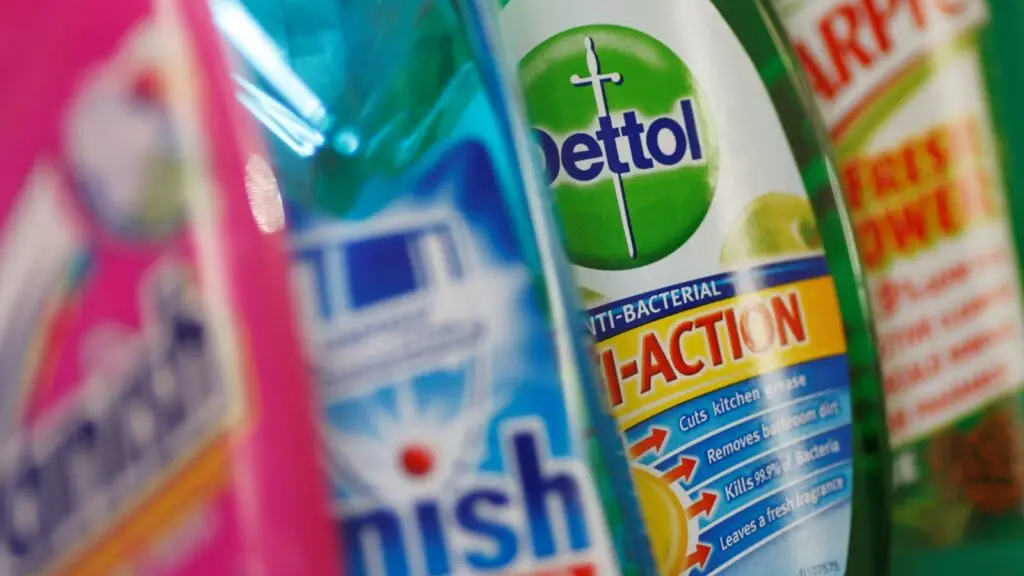Reckitt Benckiser is embarking on a risky yet bold restructuring. The company plans to sell its home care brands like Air Wick and Calgon to focus on stronger brands.
This ambitious plan by CEO Kris Licht aims to stimulate growth by pruning underperforming segments. However, it’s not without its challenges and risks.
Radical Restructuring Announced
Reckitt Benckiser, a household goods giant, announced a major overhaul to offload its home care brands. This bold move aims to prune underperforming operations to stimulate growth.
New CEO Kris Licht calls these brands ‘iconic’ but considers them non-core. This includes well-known names like Air Wick, Calgon, and Cillit Bang, which collectively enjoy £1.9bn in sales.
Strategic Shifts and Ambitious Plans
Licht also plans to divest what’s left of Mead Johnson, Reckitt’s infant nutrition business. This acquisition was initially made for $16.6bn in 2017, but it turned out to be one of the most disastrous for the company.
This overhaul aims to strip out management layers and duplication of roles. The company will be organised into three geographic regions: North America, Europe, and Emerging Markets.
This restructuring unwinds a 2017 move when Reckitt split into Health and Hygiene & Home.
Consequences and Concerns
The new Reckitt will initially be smaller as home care brands make up about a quarter of the company. However, Licht believes the focus on strong-selling brands will allow more future investment.
Licht aims to roll out brands like Strepsils and Gaviscon to more markets. ‘This is an ambitious plan with many moving parts,’ he stated.
The strategy of ‘shrink to grow’ is common in the fast-moving consumer goods (FMCG) space. Diageo and Unilever have also successfully implemented similar strategies to offload underperforming brands.
Risks and Historical Context
There are risks involved in this bold move. For instance, Cadbury Schweppes’ demerger in 2008 led to it being acquired by Kraft, a controversial deal.
Licht argues that scale will be maintained or even gained in key geographies through this strategy.
However, some worry that the new Reckitt might be overly reliant on ‘over the counter’ (OTC) products like Strepsils and Mucinex. These products’ sales can vary based on the cold and flu season.
Operational Challenges
The biggest challenge might be disposing of Mead Johnson. The Chinese arm was sold for $2.2bn in 2021, but legal and trading difficulties persist.
Reckitt was ordered to pay $60m in compensation related to its Enfamil product. The company is appealing the decision, but US litigation remains a threat.
Short-term results are tough. A tornado hit a Mead Johnson warehouse, affecting sales forecasts for the year.
Looking Forward
Despite these challenges, Licht remains optimistic. He believes in focusing investment on stronger brands for better returns.
The company aims to leverage its historical strengths while adapting to new market realities.
This transformation is a significant step for a firm that has been around since Isaac Reckitt bought a starch business in 1840.
Market Reactions and Future Prospects
There is cautious optimism in the market. Shares saw an initial rise following the announcement.
However, some analysts remain sceptical about the long-term impact of these changes.
The true measure of success will be how these moves position Reckitt in the global market in the coming years.
Reckitt’s bold restructuring is a strategic gamble. By selling its home care brands and focusing on stronger segments, the company aims to drive growth.
However, challenges and uncertainties remain, especially in handling underperforming assets like Mead Johnson. The effectiveness of this ‘shrink to grow’ strategy will be evident in the coming years.

